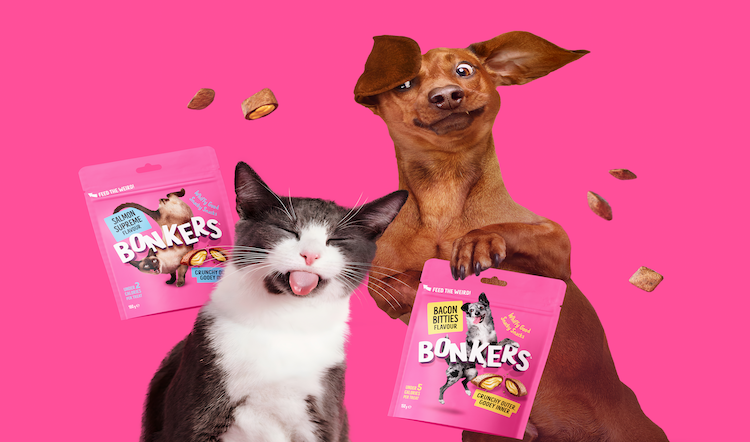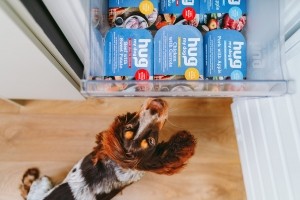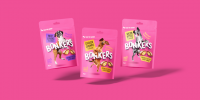Long Read
Pet food: How is the cost-of-living crisis and global supply chains impacting manufacturers?

But the last year has seen some dramatic changes in consumer habits and the global supply chain. But pet ownership remains high.
Latest statistics for The Pet Food Manufacturers Association (FPMA) show that the UK pet food market is now worth a total of £3.3bn. The largest markets continue to be dogs at £1.59bn and and cats at £1.27bn. This is followed by outdoor birds (£345m), fish (£69m), small mammals (£54m) and indoor birds (£13m).
Its research also shows that over six in ten households (62%) own some kind of pet with dogs topping the charts with 13m, followed closely by cats with a population of 12m.
FPMA says that similarities can be drawn with the food sector, as the pet food industry is also operating in a volatile environment grappling with the rising costs of ingredients, energy, transport, and packaging, brought about by global events.
As the world has returned to reality and the cost-of-living crisis has hit many people are looking at their spending habits not just for their own food costs but also that of their pets.
The RSPCA also recently revealed the number of abandoned pets in England and Wales is up 25% compared to the previous year. So the squeeze is hitting some pet owners. But how is this going to impact the pet food manufacturing sector?
Pet parents
One of the long-standing trends has been the humanisation of the pet food sector with people shopping for their pets as they do themselves. Pet parents are increasingly treating their cat or dog as part of the family and even like a child. And this close relationship with their pet is guiding their behaviour.
Inspired Pet Nutrition research of 1,000 people, found that 56% of UK pet owners would rather their own diet suffer than that of their pets. However, for those who could not spend as much money on their pets, the research also found that almost a quarter of respondents (24%) admitted to having to choose a cheaper alternative to their usual pet food choice, and 22% were reduced to feeding their pets leftovers from their own plates.
Ed Hewitt field sales manager at Reiser says that despite the challenges premium pet food options are still popular, but people are changing their purchasing behaviour.
“I think people are taking the options to mix and match. They will still use the high-end food but maybe split it out with some of the dried food so it’s going further and stretching the budget a bit further,” he says.
Despite the global challenges petcare has been traditionally recognised as a ‘recession proof’ category.
“For many, their cat or dog is a member of the family and increases to the cost of living aren’t going to prompt them to cut back on the food they know their pet enjoys,” says Zoe Taphouse, category & market activation director, Mars Petcare.
“In the last recession, petcare remained in strong growth as consumers considered it to be an affordable luxury. While people may cut down on meals out or holidays abroad, they still want to spoil themselves, their families and their pets. Our latest pet ownership study demonstrates the rise in how close owners feel they are to their pets, with 18% of dog owners (+5 pp) saying their dog is like a child to them, and 28% of owners saying their cat is like a family member.”
Interestingly, Mars Petcare’s research also reveals that less than a quarter of shoppers looking to save money when it comes to pet food say they would consider choosing a different brand of food.
And while pet treats saw an increase in popularity during the Covid-19 pandemic Mars Petcare says that treats with health benefits are continuing to grow. Its own Pedigree treats are currently seeing growth of +3.6% over the last 12 weeks, which includes the Pedigree Dentastix range.
Ben Duncan, market development organisation director, Purina UK & Ireland agrees that pet food is one of the most resilient categories.
“When financial pressures hit shoppers, we can sometimes see a polarisation in the market. However, we do know that pet food is one of the least likely categories that shoppers will decrease spend on, only 2% of shoppers are citing they will do this (source: retailer research April 2022),” he says.
NPD
But in a challenging financial environment is the NPD that has been coming through in the dog and cat categories likely to continue?
Duncan says yes. He says that changing shopper needs continue to drive NPD in the category with changes in demand for advanced nutrition; different dietary requirements and protein sources; increasingly natural products and more exciting product formats.
“Some pet owners may be looking for a specific diet that helps with a particular health condition their pet may have. Other shoppers who have an increased understanding in the importance of feeding life stage specific advanced nutrition, will be looking for tailored nutrition depending on the age of their pet,” he says.
While much of the pet food market has been dominated by the large companies much innovation and NPD has also been coming from smaller, entrepreneurial companies. And this looks set to continue at least in the short-term.
Sara Pearson, joint founder, The Hug Pet Food Company says that ‘pet parents’ are seeking out new and exciting ways to feed their animals. The company, which has its own manufacturing facility in the West Country, argues that this new generation of ‘pet parents’ are raising their dogs and cats according to how they run their own lives.
“HugMyDog and HugMyCat frozen, microwaveable, ready meals appeals to the new demographic, who are frequently urban, first timers and see their pet as either a ‘trainee baby’ or a baby alternative,” she says.
“In recent times, we have seen a growth in consumer’s seeking better-for-you products that are high in protein and contain functional ingredients. Due to the growth in pet humanisation, this current trend in the market is also relevant to what people are feeding their pets.”
This is a view supported by new brand Bonkers, which has recently launched a range of treats for pets without artificial additives.
Founder of Bonkers Alistair King says: “People are basically more and more treating their pets like children and spending more on their pets. The products they buy are reflecting how they are treating their pets differently with natural, better-quality options and more treating.”
He says that these products also need to be produced with a good value and with the current inflationary environment costs are given more relevance.
While the market is seeing a lot of trends such as plant-based foods and raw diets many of these products are in the top segment of the premium market and in the current climate consumers are being more cost conscious.
“I think if you want to make something mainstream it has to be accessible and you can’t make it four times the price,” he says.
Ingredients
From an ingredients perspective there is a lot of trend-based ingredients coming thought such as superfoods.
“One of the biggest ingredient-based trends is often not about what is in the food but about what is not. In terms of what customers are looking for in terms of artificial flavourings, artificial colours, preservatives, no soy and wheat,” he adds.
While the company has been fortunate in managing supply issues he admits that globally the pet food industry, like many others, has been hit by the global “multiple pressures.”
“We are seeing globally a tapeing off in logistics rates, shipping decreases in last 6 to 8 weeks and seen demand globally dropping off which is driving those decreases. This should bring more capacity but equally things like ingredients whose supplies affected by Ukraine Russia war is likely to continue,” he says.
These cost pressures are hitting all food manufacturers, whether human or pet food and look likely to continue for the near future at least.
Guillermo Muñoz, UK commercial director at Natures Menu and Nature’s Variety agrees that the global challenges along with increased prices are offering challenges for pet food manufacturers.
“As a manufacturer and distributor, we have been hit by increased electricity and diesel prices. Direct costs with supply and manufacturing are also increasing - raw materials and packaging are becoming more expensive as suppliers stop supply or human food chain suppliers purchase our raw material,” he says.
In response like many other industries pet food manufacturers are looking at how to cost cut and be more efficient.
Hewitt says: “We are seeing in pet food what we are seeing everywhere else where can they save money whether it be processing or ingredients."
Production changes
He also highlights how production has changed with many pet food manufacturers who have used Co2 in their production to cool ingredients having to change approach.
“They are probably using ingredients which are already frozen or at a cool temperature so they don’t have to use the CO2 due to availability and cost. We have seen the process change and buying behaviour is changing to use more frozen material for the temperature control they need instead of using gases to create the temperature,” he adds.
Pet nutrition continues to be a major focus for both food manufacturers and pet owners.
Dr Maygane Ronsmans, product manager, Animal Nutrition at Beneo, says that the primary interest of dog and cat owners is for natural pet foods with additional health benefits. With 83% of dog and 84% of cat owners considering digestive health as extremely or very important it is no surprise that one in four global new pet food products promotes a digestive health claim or prebiotic benefit on package.
This positive perception is being driven by the fact that prebiotics, such as Beneo’s natural chicory root fibres Orafti Inulin and Oligofructose, are linked with nutritional benefits for pets, that go beyond the gut.
Despite dogs generally being considered carnivores, the plant-based trend is also making its mark.
“Therefore, plant-based pet foods, such as those including vegetal protein sources like rice, will continue to grow in popularity, fuelled both by consumer demand and pet food manufacturers, as they are increasingly faced with lower availability and price volatility of meat products,” Ronsmans says.
“As pet ownership continues to rise, we don’t see this changing any time soon and expect digestive health to continue to grow in appeal, as owners seek to promote their pet’s long-term health.”
Pet owners will still be choosy about what they feed their cat or dog but food manufacturers will continue to face the pressures of the supply chain and increased costs to deliver that need. But despite this there are many food manufacturers looking at the category. You only have to look at Cranswick’s recent entry at the beginning of the year with the purchase of Grove Pet Foods.
Hewitt adds: “A lot of businesses are realising that big companies are fighting hard to make very small margins on retail meat or processed food and there is a lot more money in dog and cat food, especially as so many of the processes are similar.”

















